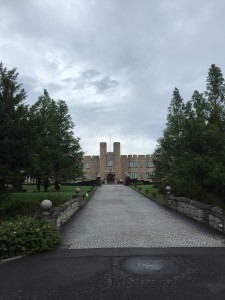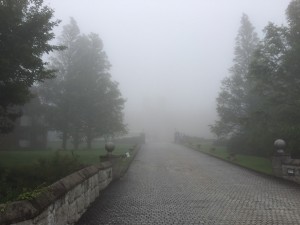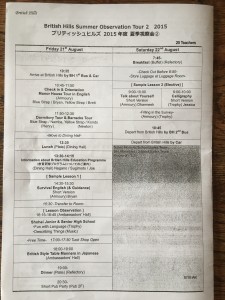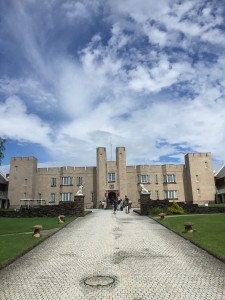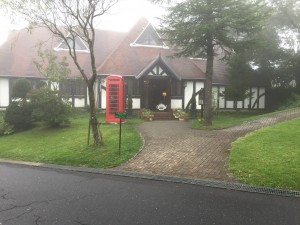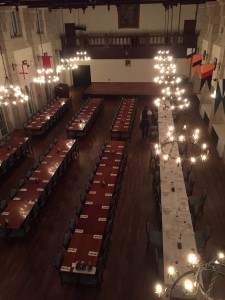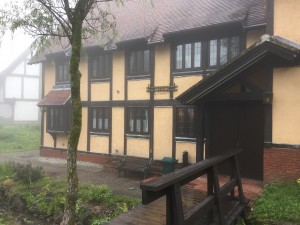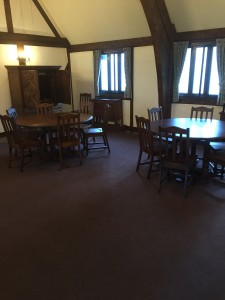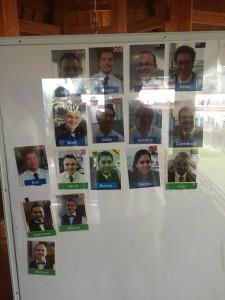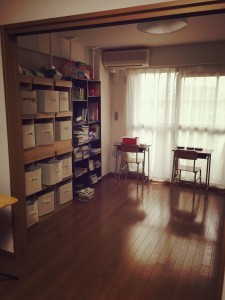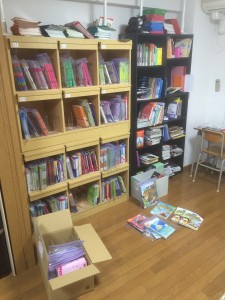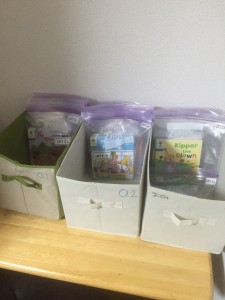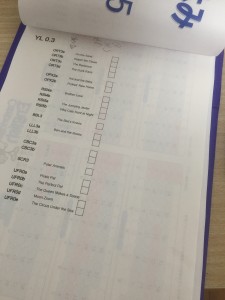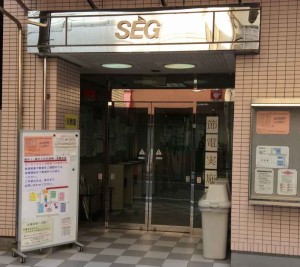Amazon Kindle
An interesting possibility
I’ve been a big fan of reading Kindle ebooks for a while now, but so far I have done all my reading on my iPhone. I bought a couple of the earlier Kindle eReaders but never liked them: the page turning, the form factor, something about them just wasn’t as good as reading on my phone so I didn’t use them much.
Last week though, Amazon were doing a deal where the latest Kindle was 5,000 yen off, so I picked one up for under 4,000 yen.
And loved it. It’s light, the screen looks great, and the pages turn in a pleasing manner. It’s a bit too easy to touch it by accident, but not a deal-breaker.
So far, so good. It’s a nice device, and the prices are coming down so fast that these things are practically disposable now.
And that’s what hit me. On Thursday as I was showing some teachers around the Academy, it struck me that Kindle could be the answer to our high-level book problem.
You can sync multiple devices to the same account (my account is linked to a dozen: computers, smartphones, tablets, and all those old Kindles).
So instead of buying hundreds of paper books that are going to lie around taking up shelf space and rarely being read, I could buy books on my Kindle account, buy a couple of Kindles for the Academy, sync them to my account, and lend them to our students. Heck, at 3,000 yen each we could just give them to the students 🙂
I already have close to 1,000 books on there (although 90% of them are fantasy, science fiction, personal finance, productivity, or teaching) and it would be easy to pick more up as needed.
The school would appear funky, students would probably appreciate the novelty, and we wouldn’t need anywhere near as much space for marginal books.
What do you think? Genius or what?
business language courses school management study trips summer camp
by sendaiben
10 comments
British Hills in Fukushima
Some corner of a foreign field…
I finally had the chance to visit British Hills in Fukushima last weekend. If you are not aware of British Hills, it’s basically an ‘English village’ run by the Kanda Foreign Languages Group that doubles as a hotel and language training centre. They are located in the mountains of Fukushima, 25 minutes drive from the nearest convenience store!
The resort was running a special summer tour for teachers (basically a PR exercise) and I was able to join it alongside 28 other teachers. We spent about 24 hours there, arriving on Friday morning and leaving on Saturday morning. It was extremely interesting and worth doing if you are thinking about taking students there. The study visit costs about 12,000 yen, which basically covers the food and transport costs. Accommodation and lessons would be much more if you were paying (more on prices later).
Weirdly, we had British weather the whole time: misty and cool. The resort is in the mountains at 1000 metres altitude, so it’s much cooler than the surrounding area in summer. Apparently they get up to 2 metres of snow in the winter though!
The schedule for the visit
The event was extremely well run, and we had a number of the sales and management staff (including the President) come up from Tokyo to join in. To be honest, it was an extremely full schedule, and we felt a bit rushed. There was no time to walk around or relax on the tour.
The facilities
The buildings and grounds at British Hills are probably the best thing about the place. The whole complex is beautiful and is very ‘English’ in a stereotypical way. Lots of lawns and Edwardian houses. It definitely fulfills its role as ‘an English village in Japan’.
The main building housing classrooms, the Refectory (dining hall), swimming pool, gym, etc.
The tea shop, which we didn’t have time to sit down in but looked good.
The dining hall, modeled on an Oxbridge college Hall.
One of the student dorm buildings.
A common room in one of the student dorms.
The pub.
The tuck shop, which I was initially excited about, and then very disappointed with. None of the snacks are British!
Lessons
During the tour we were able to attend or watch the following lessons:
- Introductory lesson/orientation (English)
- Tour of main building (English)
- Tour of dormitories and main student building (Armory) (Japanese)
- Information about B.H. study programs (Japanese)
- Survival English (English)
- Lesson Observations (2) (English)
- British Table Manners (Japanese)
- Calligraphy (English)
My impression of what we saw is that the Japanese orientations (PR pitches) were pretty good, the content lessons in English and Japanese were very good, and the language lessons in English were pretty poor. The lessons I saw (which I presume are the best lessons) struck me as something a first-year ALT might do. Lots of running but most students are not doing anything for most of the time. I was expecting much more and this was the most disappointing aspect of the visit, particularly as students pay 3000 each for these lessons, so with a full class of 20 you are paying 60,000 yen to have students do criss-cross for 90 minutes.
The calligraphy lesson we took was very good, as was the lecture on table manners. I imagine the cooking lessons would also be fun.
Based on what I saw, the language lessons are not worth doing, but the culture and craft ones might be.
Food
We had three meals on site.
Lunch was fine. It was filling, hearty, inoffensive, and kind of British.
Dinner was excellent.
Breakfast was fine, buffet-style like a hotel. Not great quality but filling.
Staff
The staff were without exception all great. Friendly and welcoming, there was a really nice atmosphere throughout the site.
Some of the teaching staff.
Apparently there are twenty-three foreign teaching staff, and twenty other foreign staff on site. As the resort is open all year round, they presumably are working shifts and taking holidays. My impression is that there were not as many foreign staff as I was expecting. To be honest, they were kind of thin on the ground. British Hills, at least while I was there, did not deliver the kind of English immersion I was expecting.
The resort did have Japanese staff that were doing their best to interact with visitors in English, but the few interactions I witnessed seemed a bit forced and the resort staff’s English was not perfect, even when dealing with junior high school students. Of course, this would not be important outside of the context of an English immersion experience.
Overall though, the friendliness and warm atmosphere was a credit to the resort.
Prices and Location
Now this is the killer. The resort is located about 40 minutes drive from Shin-Shirakawa shinkansen station. The resort operates shuttles, but I’m not sure if you have to pay for them. From Sendai, it’s basically two hours door-to-door by shinkansen, or three and a half by coach.
The prices, both to stay and for lessons, seem a bit high to me. The resort has a high season (July to September) and a low season (the rest of the year). Prices are slightly lower in the low season. There are also different prices for schools, universities, individuals, and groups. It’s all very confusing.
My impression is that it will cost 15,000+ yen to stay and 3000-5000 yen per class per student. They seem to be empty in the winter, so it may be possible to negotiate a better deal then.
Overall
I was both impressed and unimpressed with British Hills. The facilities are amazing, the staff are really friendly, it’s inconvenient to get to, the prices are a bit too high for accommodation and ridiculous for lessons, and the language lesson quality is poor.
Overall I would not write it off, but you would have to be very careful when designing your program to make it worthwhile. I get the feeling their standard packages would be a poor value.
It was an interesting couple of days though. Thank you British Hills for the invitation and the hospitality, and hopefully I’ll have a chance to take some students there at some point.
Has anyone else visited British Hills? How was it?
business curriculum eikaiwa extensive listening extensive reading graded readers high school junior high school language courses school management self-study
by sendaiben
4 comments
Extensive Reading for Secondary Students
I’ve been wanting to write this post for a long time.
On April 1st this year the language school I help out at started a new section called Cambridge Academy. Getting ready for this and implementing it over the last four weeks has been a really fun challenge, and now that we are taking a little break for the Golden Week holidays I feel like I have some lessons to share.
In this post I will talk about what we are doing, why we decided to start a new sections, and a few problems and successes we have had.
Why start a new school?
Several reasons. The main one is that we weren’t happy with our existing junior and senior high school classes. It seemed that while the most able and motivated students could do very well, others did not. We gave students many chances to do work outside of class, and the ones that did got better and the ones that didn’t, didn’t. We were looking for a way to improve that.
I was also able to visit SEG in Tokyo, and see their incredible resources and program. This inspired me to start something similar in Sendai, and we have benefited hugely from using Akio Furukawa’s experiences and advice in setting up the program.
Finally, the academy format and the results we are hoping for seem to be quite commercially viable. While my main motivation with the school is to provide students with excellent education, it’s nice if the school pays for itself too.
How does the Academy work?
There are two main concepts behind the Cambridge Academy. The first is to provide students with the chance to receive large amounts of comprehensible input through graded and leveled readers, alongside speaking and writing activities. Initially the input was based mainly on books but we quickly realised the power of reading with CDs so we have since changed this to books with CDs.
The second concept is to do 55 minutes of reading/listening in the school each week. This ensures that all students will receive at least 40 hours of reading/listening per year, or 200 hours over the course of the five years we envision the ideal program lasting (JHS 1st grade to SHS 2nd grade). Of course, motivated and ambitious students will do much more at home, but with the in-class reading system ensures that all students will make some progress.
The students will also have a speaking class with a focus on production, a writing assignment each week, and the chance to do online vocabulary study with Word Engine.
What have you done so far?
At first the main stumbling block was space: we needed an extra classroom that could house the books and other resources as well as accommodate twelve students. Luckily the apartment above the school became available in March, so we quickly rented it and set it up for school use. As the Academy classes are pretty much silent, we shouldn’t have any problems with the neighbours or the landlord.
Next was gathering resources. We already had a large graded and leveled reader collection built up over the last twelve years or so, but it wasn’t enough to serve the fifty or so students who started in April, let alone the numbers we would like to see eventually. After several large orders to englishbooks.jp and Amazon, we are still playing catchup and will probably continue buying books throughout the year (this matches my experience at Tohoku University, where book resources never quite seem to meet student demand).
Main bookshelves at the Academy.
The next step was to develop a system to determine what students would do, how we would track it, and how to organise resources. Here we benefited immensely by being able to copy a lot of what SEG does. The interesting thing is that we found ourselves adopting elements of the SEG system that didn’t make sense to me at first (like having books organised in sets with CDs, and having students read while listening).
Book sets organised using ziplock freezer bags.
We had a couple of CD players when we started classes, but after I saw how much the students enjoyed listening as they read I quickly bought ten more so that we could offer a player to each student. Personal CD players can be found on Amazon.jp for between 1500 and about 5000 yen. There seem to be limited numbers as these products are no longer popular. We have also failed to find CD players that can play MP3 CDs for a reasonable price (there is a Sony model that costs about 25,000 yen, but this seems a bit too high to me). An ongoing project.
We have also noticed the need to keep track of what each student has read so that we can give them new books in a timely way. Right now the best solution appears to be a checksheet that we will put in each students file so that we have a record of that they have read. This is also a work in progress but it is going quite well.
Checksheet to track student reading.
Results so far
The first four weeks have been great. Students seem to enjoy the format and even the students who don’t seem to enjoy English classes do the reading activities willingly. About half of the students do homework, the others do not. My policy here is to encourage and support, but leave it up to each student as to how much they want to do.
For the school, the format means that we can serve up to 24 students each weekday evening (four six-student speaking classes and two twelve-student reading classes that alternate). In practice this means that three teachers can take four classes, which increases the profitability quite a bit. The schedule looks like this:
19:20-20:15
Class A speaking with Teacher 1
Class B speaking with Teacher 2
Classes C and D reading with Teacher 3
20:25-21:20
Class C speaking with Teacher 1
Class D speaking with Teacher 2
Classes A and B reading with Teacher 3
From a business perspective the profit per student in the Academy system is higher than other classes. We charge 15,000 yen a month plus tax for 44 two-hour classes a year, so I think this is a good value for students too (they would have to pay more than that each month just to buy the books they end up reading).
The specialized knowledge required to set up the system, and the cost of books and other equipment (we’ve spent over a million yen setting up the Academy, and we already had thousands of books) means that it would be difficult for other schools to copy our classes if we are successful.
Most of all, it is wonderful to see the students enjoying their studies, and achieving success each week. The Academy style classes also work very well with students who have social issues. For a teacher, it’s a very fun class to run and I hope our students will find themselves doing better at school.
What’s next?
Well, we’ll continue developing the system and trying to improve it. I suspect motivation may become a problem for some students once the novelty wears off, but I haven’t seen this so far. Hopefully the combination of success and the contrast between an hour of reading/listening and the rest of their busy day will help stave this off.
Business-wise I would like to see the Academy grow in size, and if it gets big enough I would like to move it to a new location in the city centre to increase our catchment area. Ideally this would happen in the next year or two.
So far I am very pleased with how things are going. I’ll post an update in September or so and let you know how we are doing. Please feel free to ask any questions in the comments.
curriculum extensive reading language courses school management: Akio Furukawa English in Japan extensive listening extensive reading juku SEG yomiyasusa level
by sendaiben
5 comments
A Visit to SEG
The Best ER Program in the World?
A couple of months ago I finally had the chance to visit SEG in Tokyo. This is Akio Furukawa’s school, and one of the biggest ER programs in the world. I wrote an article about my observations and thoughts for the Extensive Reading SIG newsletter.
You can also read the full text of the article below:
I had wanted to visit SEG for years, so I was delighted when the opportunity to do so came up in March 2014. I am very grateful to Akio Furukawa for inviting me, and to all the teachers and students who welcomed me so warmly into their classes.
SEG (Scientific Education Group) is a juku located in the heart of Shinjuku in Tokyo. It is a successful business, serving around 3,000 students a year and helping many of them toward academic success. SEG was founded in 1980 teaching mathematics and science, but in 2000 started offering extensive reading classes. These were changed in 2006 into the current format of classes split between ER and oral communication. For extensive reading practitioners, SEG is important because of the activities of its founder, Akio Furukawa. Originally a mathematician, Mr Furukawa is perhaps best known for the YL (yomiyasusa level) readability scale and the extensive lists of word counts he publishes in the English ER Complete Book Guide, currently in its 4th edition, available online at SEG. Mr Furukawa has also been very active in promoting ER in Japan through his activities with the SSS (Start with Simple Stories) movement, JERA (the Japan Extensive Reading Association), and his numerous publications on ER.
First impressions
SEG is just a few minutes’ walk from Shinjuku station, just off the main street. The first hint that you might be drawing near is the various staff members wearing blue SEG armbands as they keep an eye on the students walking to and from the school. The school is actually spread out among a number of different buildings in its neighbourhood, each holding several floors’ worth of classrooms. The English classrooms are essentially mini-libraries, with each one holding around 20,000 books. The desks are standard Japanese school issue, with twenty to thirty per room.
Glancing at the shelves reveals an eclectic mix of graded readers, levelled readers, picture books, children’s books, young adult, and regular fiction and non-fiction. There are two types of classrooms: one for beginners consisting mainly of Oxford Reading Tree, picture books, and easier graded and levelled readers, and one for more advanced students with higher level books and novels. I saw several of my own favourite books at the school, including the Dune series, Heinlein’s Citizen of the Galaxy, the Millenium trilogy, Nick Sharratt’s Pants books, and pretty much all of the books I use with my students. I also managed to read a couple of new ones that I really enjoyed: The Giver by Louis Lowry and The Report Card by Andrew Clements. I was supposed to be observing the class, but the books proved too tempting. To be honest, I could have spent months there reading.
The second thing I noticed was how focused the students were: They all had books to read, or listen to on personal CD players, and were quietly getting on with things. Between books they would fill in their reading records and consult with the teacher.
The curriculum
SEG’s English curriculum is divided into two strands: extensive reading classes taught by Japanese teachers and communication classes taught by native speakers. The ER classes are conducted in Japanese and the communication classes are conducted in English. Classes contain up to about 15 students and are led by one teacher, occasionally assisted by trainee teachers.
The communication classes start out as speaking and listening for junior high school first-year students, and add intensive reading and writing later on. These classes use textbooks and are held in the English classroom-libraries described above. In the current SEG system, students stay in the same classroom for both ER and communication classes while their teachers switch halfway. Both classes run for 80 minutes in a three-hour block with a 20-minute break in the middle. During the extensive reading classes, students mainly read silently. There are supplementary activities such as listening, shadowing, and speed reading, but for much of the class there is a quiet hum of concentration. Each student reads at their own level, and can choose whether to read, listen, or listen while following along in their book. Most of the books I saw for lower-level students had CDs to accompany the text.
SEG teaches a purist approach to ER: students read without dictionaries and stop reading if they find books difficult or uninteresting. There are no tests or book reports to write: instead students make a record of the book title and write a short comment about it. Students record their reading in special notebooks, and many of the students I saw had incredible cumulative word counts, including one high school girl who was approaching 4 million words! Students were reading a range of books, from Oxford Reading Tree to compendiums of famous murder cases.
Discovery: Guided extensive reading
It was not actually until the morning of the second day that I realized the significance of what I was seeing in the SEG extensive reading classes. I had been distracted by the amazing libraries, the orderliness, and the student achievement. The real point of interest, however, is the teaching method. It does not say much for me that I had read about SEG, talked to teachers at SEG, and observed half a dozen classes, and still had not realized what was going on.
At SEG, students do not choose books. Instead the teachers, based on their knowledge of the students’ level, their interests, and the books, suggest books that they think are appropriate for the students to read next. This method is similar to what Donalyn Miller describes in her book The Book Whisperer. An experienced teacher can make better recommendations than students can choose for themselves, because they have actually read all the books and know which books have appealed to which students in the past. A skilled teacher can push students to read a little more, to read something a bit more difficult, or to take a break and read something easy if they are tired or low on energy.
Seeing this in action is impressive. Teachers flit around the classroom chatting with students as they finish reading, grabbing specific titles from the shelves in passing and dropping them in front of students. Occasionally the teacher will look at a student’s comments in their reading record, or pause to write something in their own notes. I talked to a couple of the teachers about this central aspect of their classes, and they confirmed that it was not as effortless as it looked. Teachers keep detailed records of what each student has read, including notes on whether they liked it, found it difficult, or gave up. They spend time before class mentally preparing and lining up possible books. One teacher I spoke to spends most of her 90-minute commute thinking about and making notes about which books to recommend to each student.
The students are not passive in this process, but are involved in a constant dialogue with their teachers, both through their reading notebooks and also by talking about each book as they finish it. Students are free to stop reading books if they find them boring or difficult, and often make requests or suggestions. One student in a class I observed asked his teacher for a book featuring water polo, a request that had both of us stumped! Teachers at SEG try to balance graded and non-graded material to maximise the benefit to students. While graded readers are often a better fit in terms of accessible language, levelled or native materials tend to be more attractive and interesting. A judicious mix of books allows students to get the best of both worlds.
The other key ingredient in the ER program is in-class reading (sustained silent reading), which means that the students do at least 70-80 minutes of reading in English a week. Many students also take books home with them, and of course starting them in class makes it much more likely that they will finish them as homework. Mr Furukawa told me that roughly a third of his students attain high proficiency in English (as measured by independent test scores). As a point of reference, I would say that maybe 10% of mine go on to master English and make it a part of who they are.
Conclusion: Lessons to take away
My visit to SEG blew me away. The size and success of the school, the richness of the resources, the achievement of the students, and the skill and knowledge of the teachers changed my view of what is possible. I don’t think I will be able to adopt guided extensive reading in my university classes. With over 40 students per class, I just won’t be able to give each student enough attention, but I can certainly try to increase the number of interactions I have with students. I have resolved to contribute more to students’ reading choices by recommending books and giving advice. Mr Furukawa and SEG welcome visits from teachers, and I recommend that any teacher interested in extensive reading or English teaching consider giving them a visit.
curriculum eikaiwa expectations language courses school management university
by sendaiben
2 comments
Kaizen, the art of gradual improvement
An essential part of program development
I mentioned kaizen (continuous improvement) at the end of my talk on ER program design.
Kaizen is making things better, continuously. Basically finding and solving problems over and over again. Over time, this results in huge improvements and the evolution of programs.
I’ve been very fortunate to be able to work with my colleague Dan E at Tohoku University, who is a master of kaizen. Thanks to this, our extensive reading program is several orders of magnitude better than it was when we started collaborating.
At Cambridge English as well, thinking back to when we started over ten years ago the school and the classes are unrecognizable. Almost everything we do, we do better now.
But kaizen does not happen automatically. It requires teachers to have the desire and the ability to make changes. It also requires a culture of development, where problems lead to solutions that are implemented across the board. Communication is essential and talking about problems with colleagues leads to better solutions.
Some examples of kaizen at Tohoku University:
- improving worksheets so that students understand them better
- developing bilingual explanations
- sharing effective class activities
- developing protocols to deal with cheating
- having students write book reports in class instead of for homework
Examples of kaizen at Cambridge English:
- developing electronic and paper record keeping
- writing student names in romaji on everything (books, notebooks, attendance cards)
- developing lesson plans
- choosing materials
- organizing the classroom
As you can see, nothing groundbreaking. The main point is that improvements are continuous, problems are dealt with as they come up, solutions are reached through communicating with colleagues and are implemented by everyone.
Kaizen is barely noticeable in the short term, but over a longer period the improvements are staggering.
Do you have any positive or negative experiences with kaizen?

